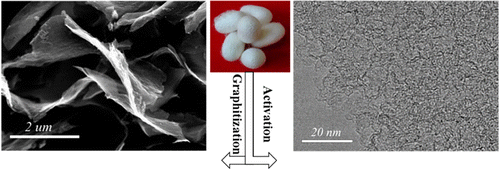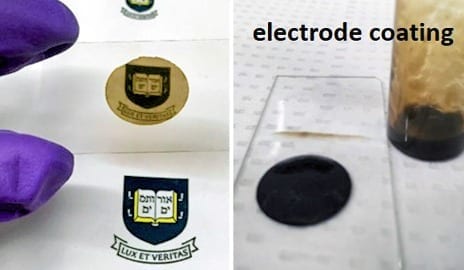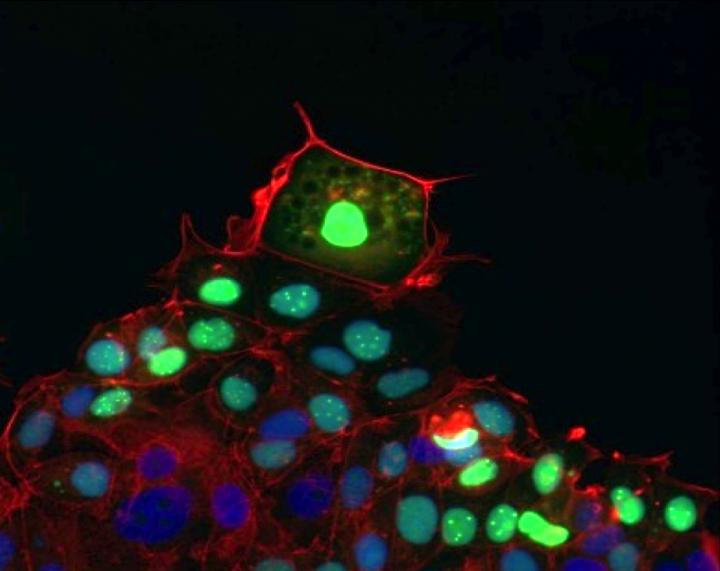
It also worked for over 10,000 cycles with only a 9 percent loss in stability
Lithium-ion batteries have enabled many of today’s electronics, from portable gadgets to electric cars. Lithium-ion batteries have enabled many of today’s electronics, from portable gadgets to electric cars. But much to the frustration of consumers, none of these batteries last long without a recharge. Now scientists report in the journal ACS Nano the development of a new, “green” way to boost the performance of these batteries — with a material derived from silk.
Chuanbao Cao and colleagues note that carbon is a key component in commercial Li-ion energy storage devices including batteries and supercapacitors. Most commonly, graphite fills that role, but it has a limited energy capacity. To improve the energy storage, manufacturers are looking for an alternative material to replace graphite. Cao’s team wanted to see if they could develop such a material using a sustainable source.
The researchers found a way to process natural silk to create carbon-based nanosheets that could potentially be used in energy storage devices. Their material stores five times more lithium than graphite can — a capacity that is critical to improving battery performance. It also worked for over 10,000 cycles with only a 9 percent loss in stability. The researchers successfully incorporated their material in prototype batteries and supercapacitors in a one-step method that could easily be scaled up, the researchers note.
But much to the frustration of consumers, none of these batteries last long without a recharge. Now scientists report in the journal ACS Nano the development of a new, “green” way to boost the performance of these batteries — with a material derived from silk.
Chuanbao Cao and colleagues note that carbon is a key component in commercial Li-ion energy storage devices including batteries and supercapacitors. Most commonly, graphite fills that role, but it has a limited energy capacity. To improve the energy storage, manufacturers are looking for an alternative material to replace graphite. Cao’s team wanted to see if they could develop such a material using a sustainable source.
The researchers found a way to process natural silk to create carbon-based nanosheets that could potentially be used in energy storage devices. Their material stores five times more lithium than graphite can — a capacity that is critical to improving battery performance. It also worked for over 10,000 cycles with only a 9 percent loss in stability. The researchers successfully incorporated their material in prototype batteries and supercapacitors in a one-step method that could easily be scaled up, the researchers note.
The Latest on: Next-generation batteries
[google_news title=”” keyword=”Next-generation batteries” num_posts=”10″ blurb_length=”0″ show_thumb=”left”]
via Google News
The Latest on: Next-generation batteries
- Nintendo Switch 2 Handheld Mode Said to be Clocked 'Crazy Low' for Better Battery Life - Rumoron May 2, 2024 at 4:16 am
What this means for gaming fans is that, like the original Switch, games will look and run better when running in docked mode. Undocked, things might not be quite as impressive, but you’ll at least be ...
- Li-S Energy Next Generation Batteries Pass Critical Safety Testson May 1, 2024 at 5:30 am
Australian battery technology company Li-S Energy Limited (ASX Code: LIS) is pleased to announce its semi-solid-state lithium sulfur (Li-S) battery cells have successfully passed a rigorous series of ...
- Toyota, Argonne National Lab study lithium-ion battery recyclingon April 30, 2024 at 5:00 pm
to maintain a diverse portfolio of recycling options for a diverse array of battery platforms and chemistries," says Nik Singh, senior scientist in the Materials Research Department of the automaker’s ...
- Beats launch next-generation Beats Solo 4 headphoneson April 30, 2024 at 12:12 pm
Apple-owned Beats has today unveiled the next-generation of its most popular headphones, Beats Solo 4, marking the first update to the product in nearly 7 years, featuring upgraded sound quality, pers ...
- The next-generation Ford E-Transit gets practical upgradeson April 29, 2024 at 5:43 am
Based on pure necessity and customer demands, the next generation of one of the first electric commercial vans to hit the market gets enhanced range, faster charging, and ...
- Hithium Hosts Roundtable at the BNEF Summit New York, Discussing Next Generation Battery Energy Storage Systemon April 24, 2024 at 9:03 am
From April 16th to 17th, the BloombergNEF (BNEF) Summit was held in New York, USA. The BNEF Summit brings together energy, finance, and te ...
- Nissan wants to take the lead in next-generation solid-state EV batterieson April 22, 2024 at 2:01 am
“Nissan believes it can deliver a solid-state battery by 2028 that holds twice the energy of a lithium-ion battery, charges in one-third the time,” and is reasonably affordable to make, AN reports.
- Beyond Lithium: What Will the Next Generation of Batteries Be Made Of?on April 18, 2024 at 1:59 pm
Lithium-ion batteries have taken up permanent residence in our homes for years now. They're hidden in your phone and laptop, but they might also lurk in your electric toothbrush or your bike. Even ...
- Expion360 Announces Substantial Preorders of Next Generation Lithium Batteries Now Featuring Vertical Heat Conduction™ Heating Technologyon April 18, 2024 at 7:31 am
Expion360 Inc. (Nasdaq: XPON) (“Expion360” or the “Company”), an industry leader in lithium-ion battery power storage solutions, today announced substantial preorders of its next generation Group 27 ...
- Expion360 Announces Substantial Preorders of Next Generation Lithium Batteries Now Featuring ...on April 18, 2024 at 5:35 am
Expion360 Inc. (Nasdaq: XPON) (“Expion360” or the “Company”), an industry leader in lithium-ion battery power storage solutions, today announced substantial preorders of ...
via Bing News










